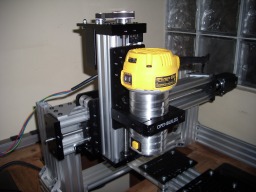Upgrading the “old” C-Beam machine
Discussion in 'CNC Mills/Routers' started by Ronald van Arkel, May 24, 2016.
Upgrading the C-Beam machine
Discussion in 'CNC Mills/Routers' started by Ronald van Arkel, May 24, 2016.
So we have new plates, stronger motors, belt drive reduction, but what should we do with them? In this article you might find the answer you were looking for as we took an “old” C-Beam machine and started to upgrade the X/Z body and added more torque and precision to the Z-axis.
Page 3 of 3
Page 3 of 3
